Abstract
Using the WHO Global Database on Child Growth, which covers 87% of the total population of under-5-year-olds in developing countries, we describe the worldwide distribution of protein-energy malnutrition, based on nationally representative cross-sectional data gathered between 1980 and 1992 in 79 developing countries in Africa, Asia, Latin America, and Oceania. The findings confirm that more than a third of the world's children are affected. For all the indicators (wasting, stunting, and underweight) the most favourable situation--low or moderate prevalences--occurs in Latin America; in Asia most countries have high or very high prevalences; and in Africa a combination of both these circumstances is found. A total 80% of the children affected live in Asia--mainly in southern Asia--15% in Africa, and 5% in Latin America. Approximately, 43% of children (230 million) in developing countries are stunted. Efforts to accelerate significantly economic development will be unsuccessful until optimal child growth and development are ensured for the majority.
Full text
PDF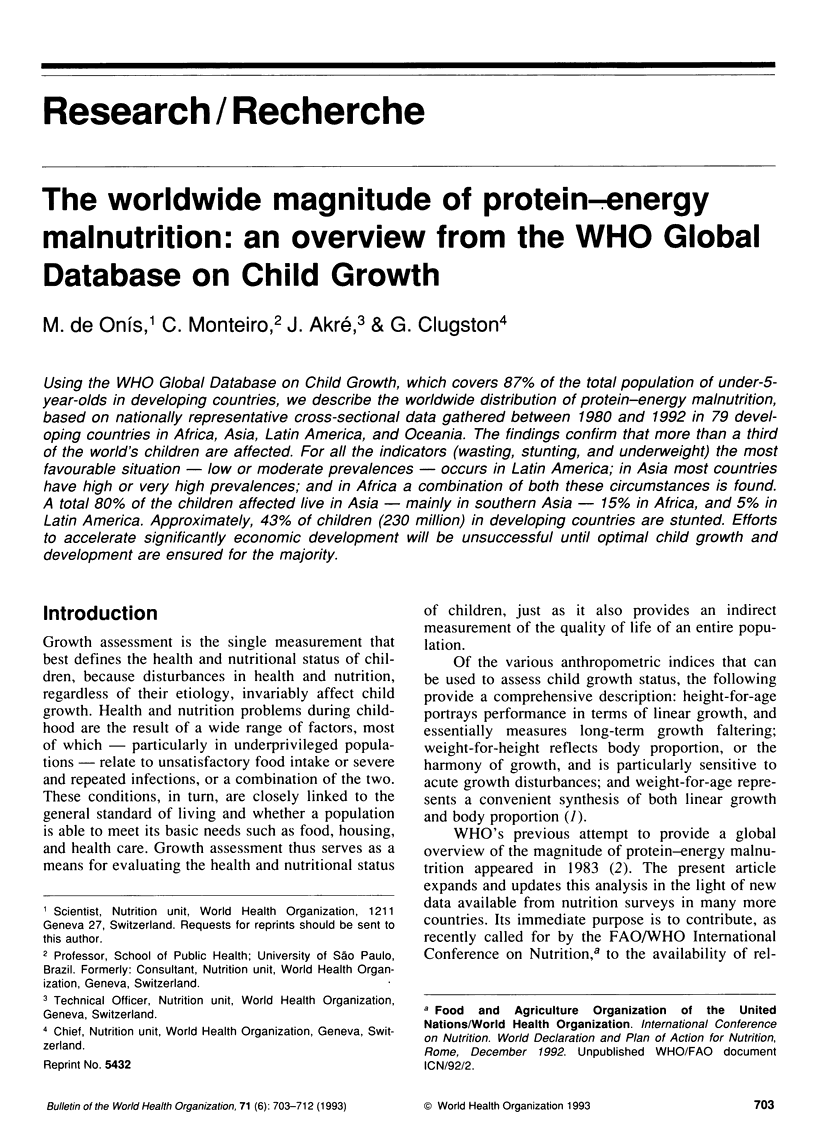
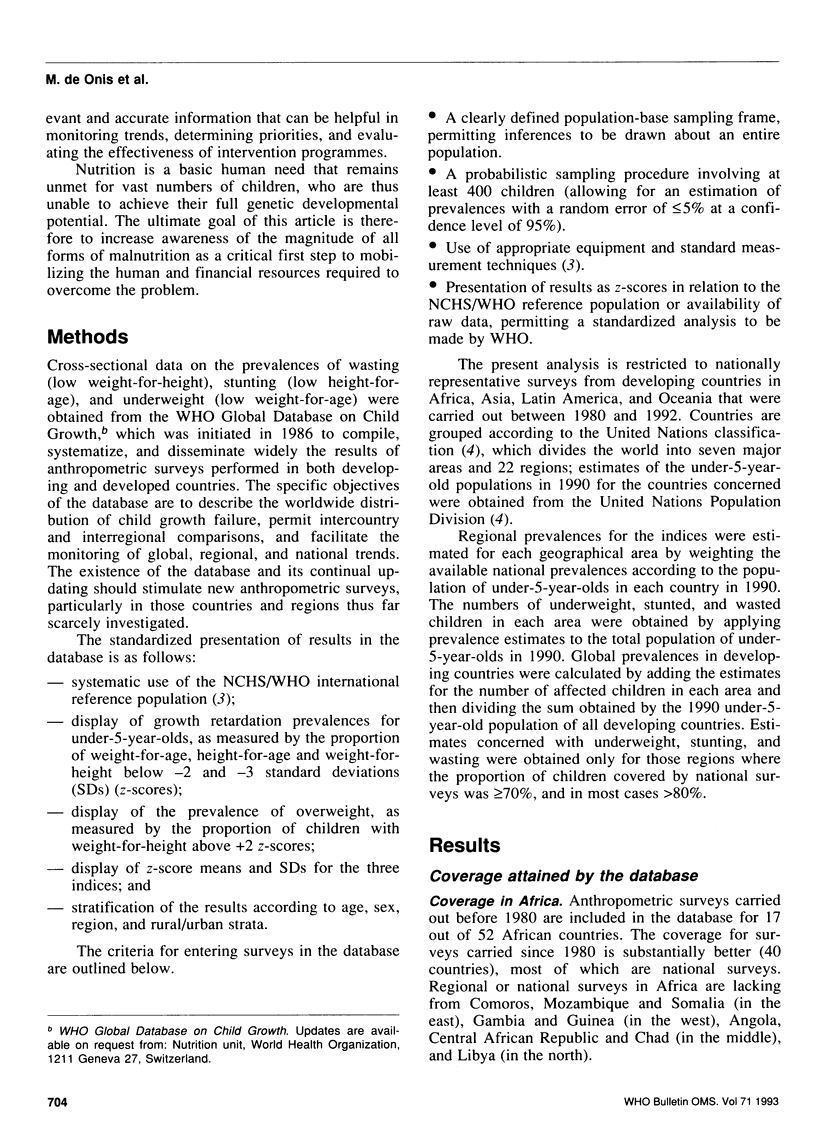
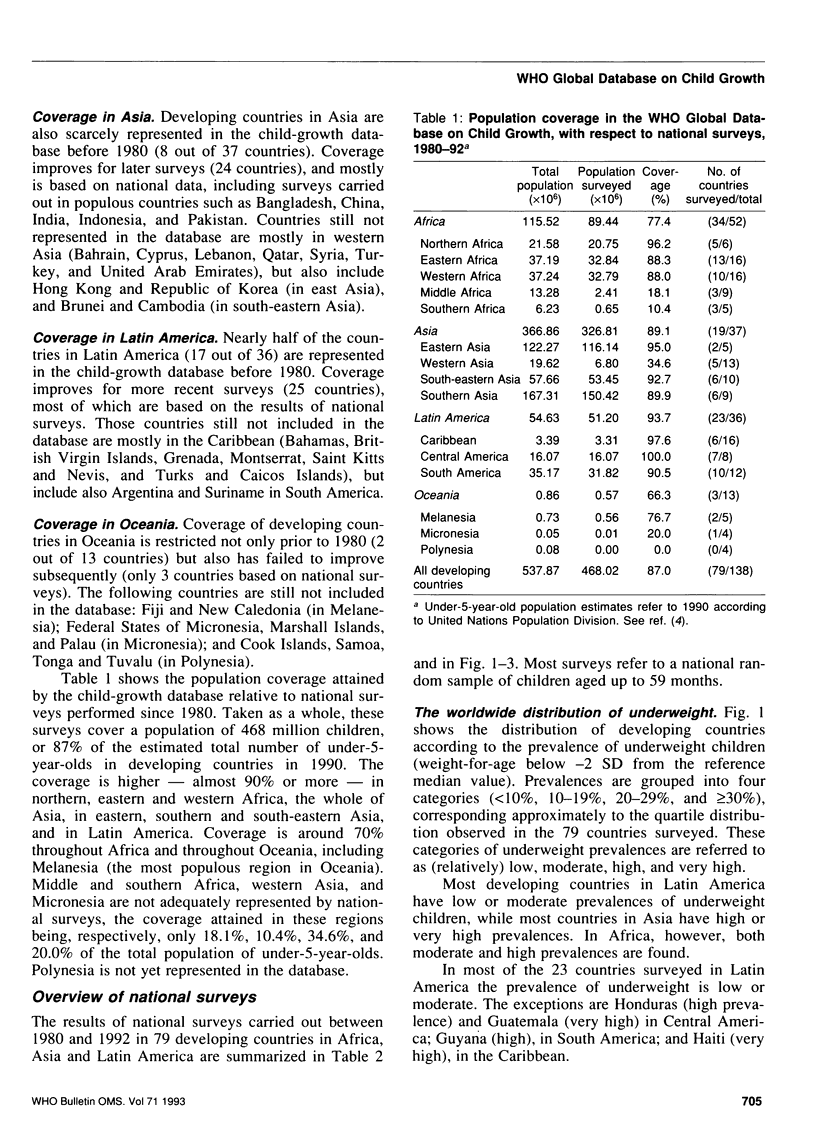
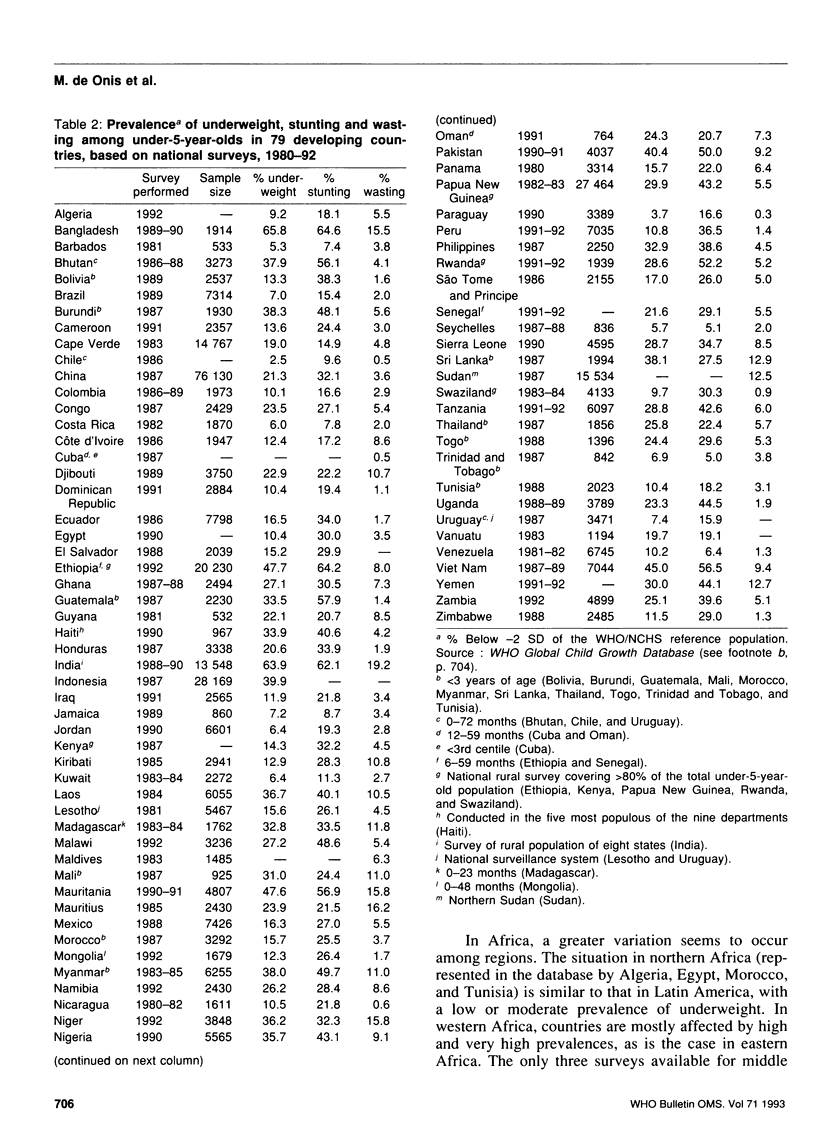
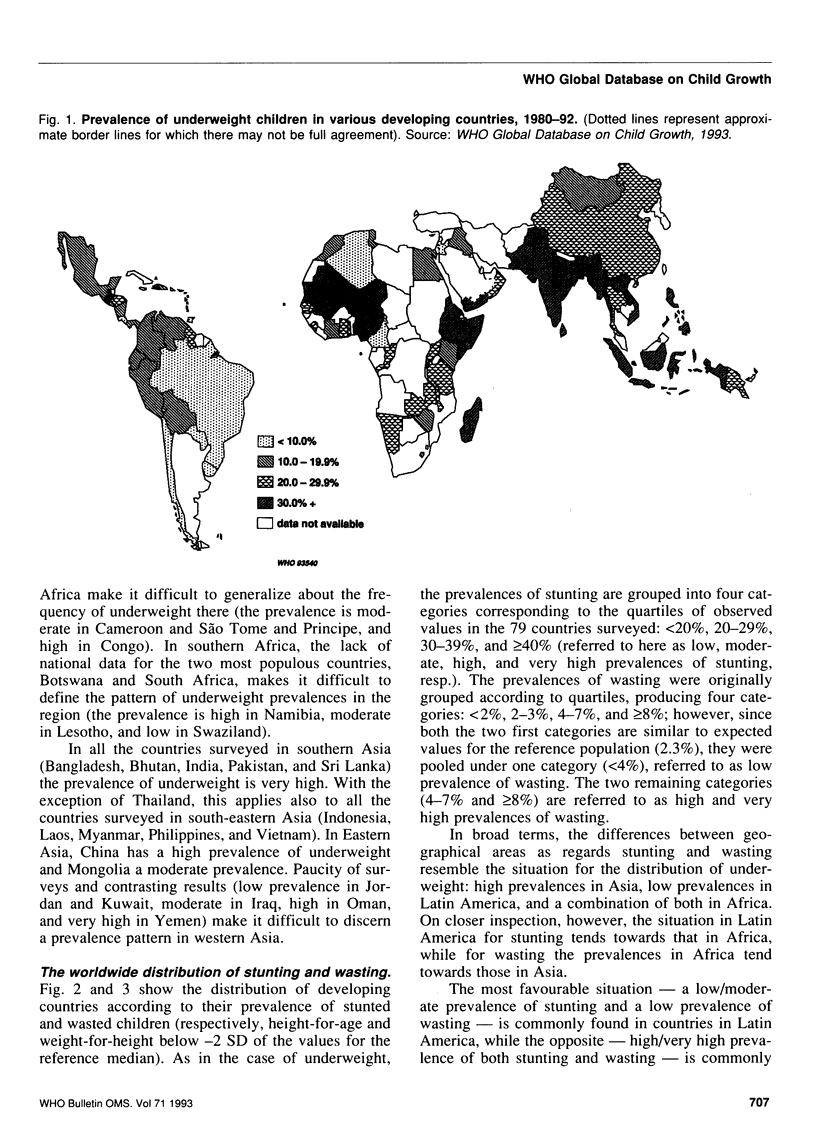
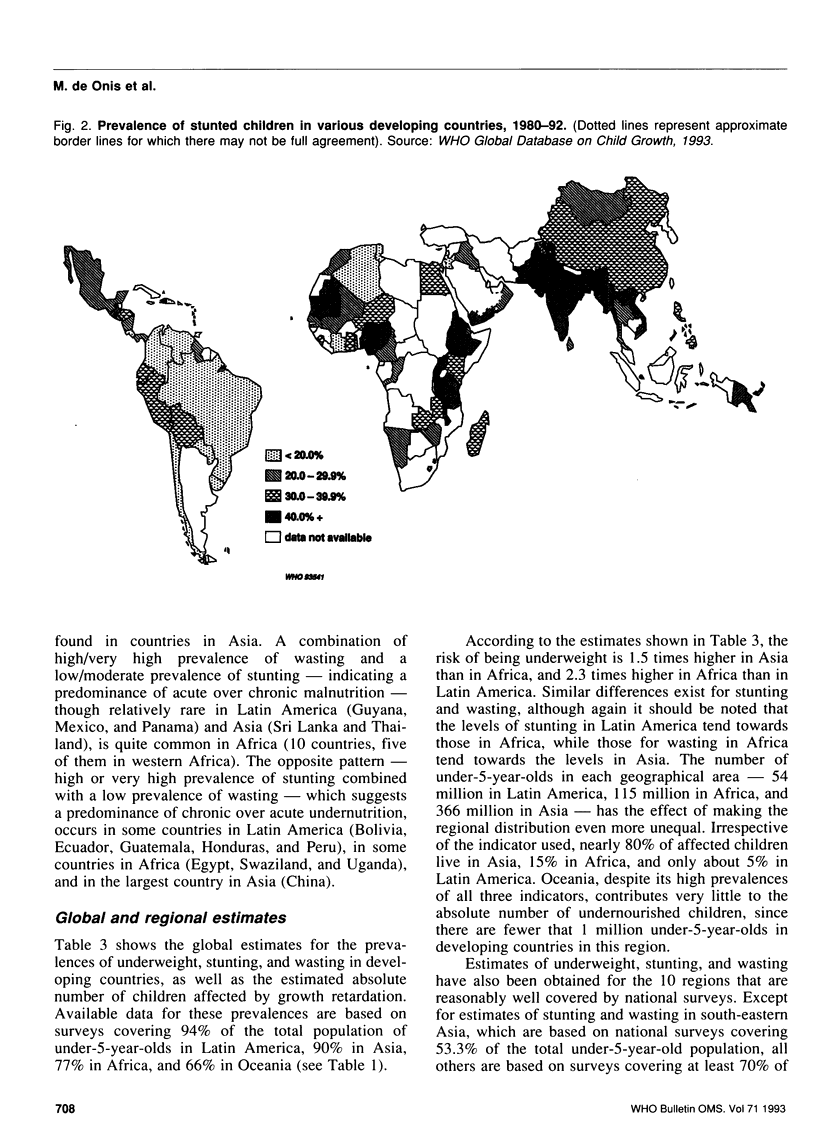
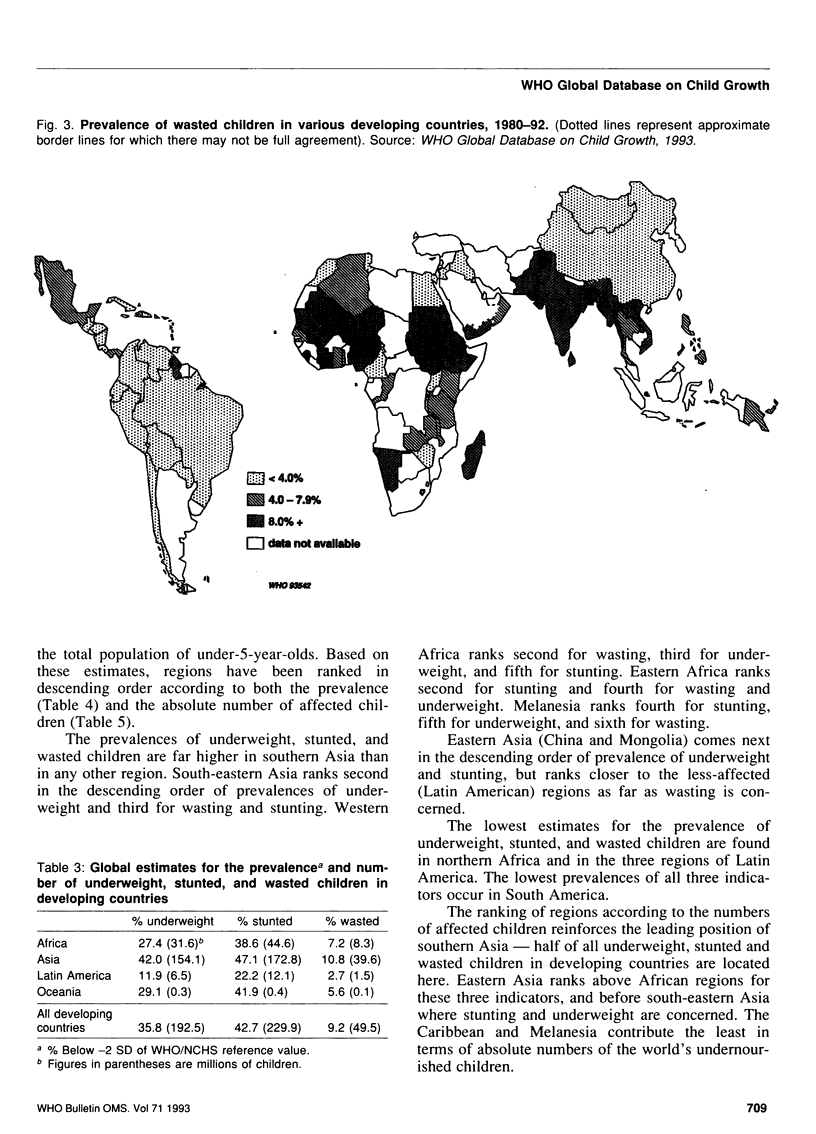
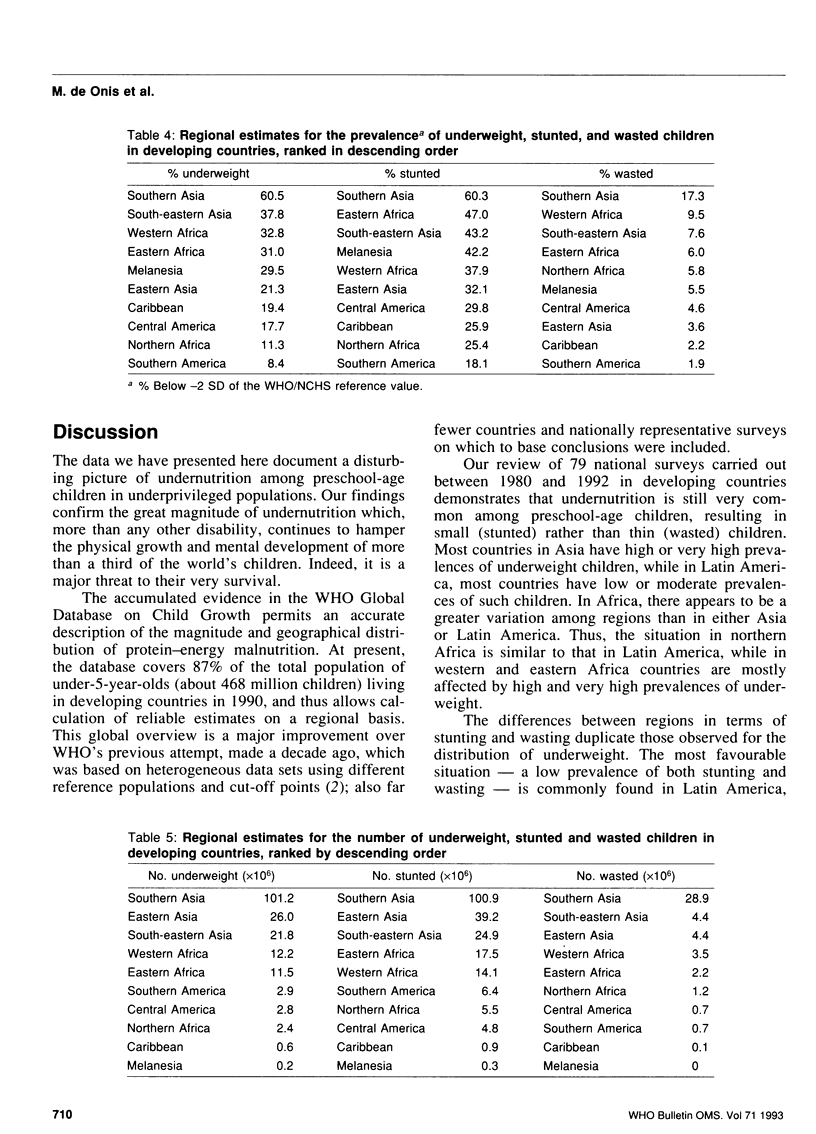
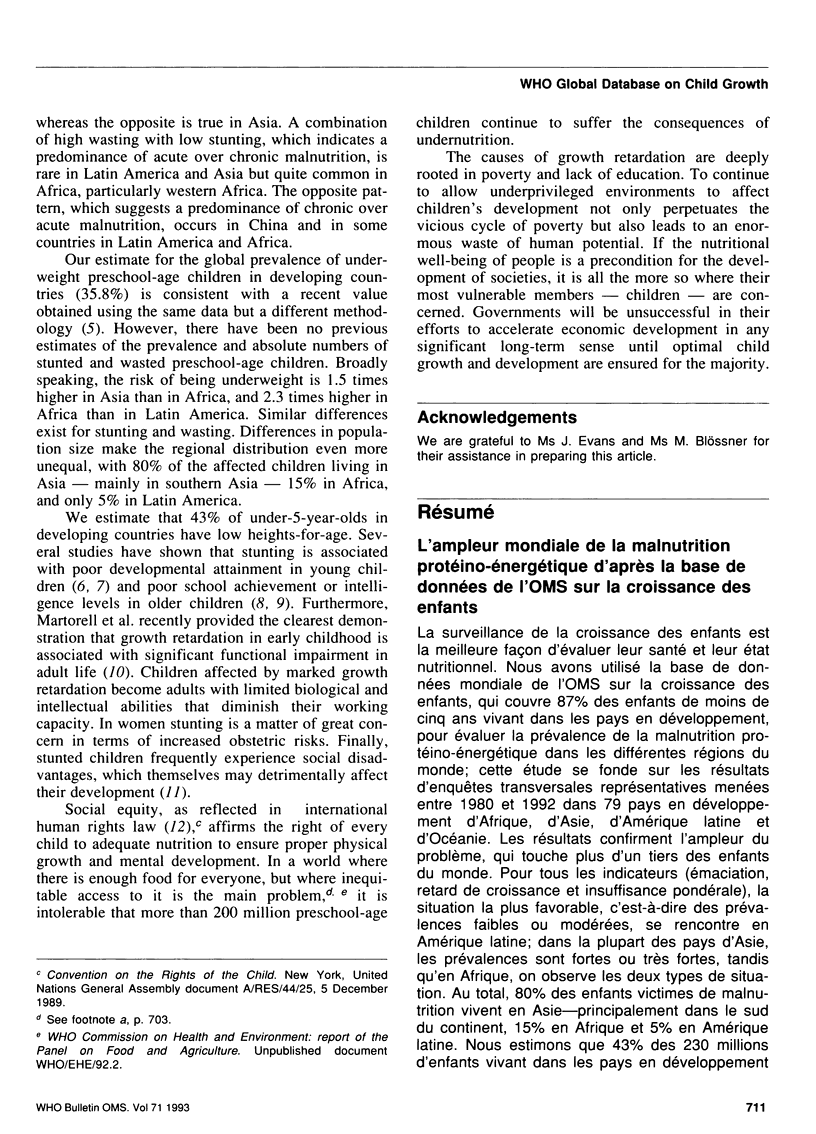
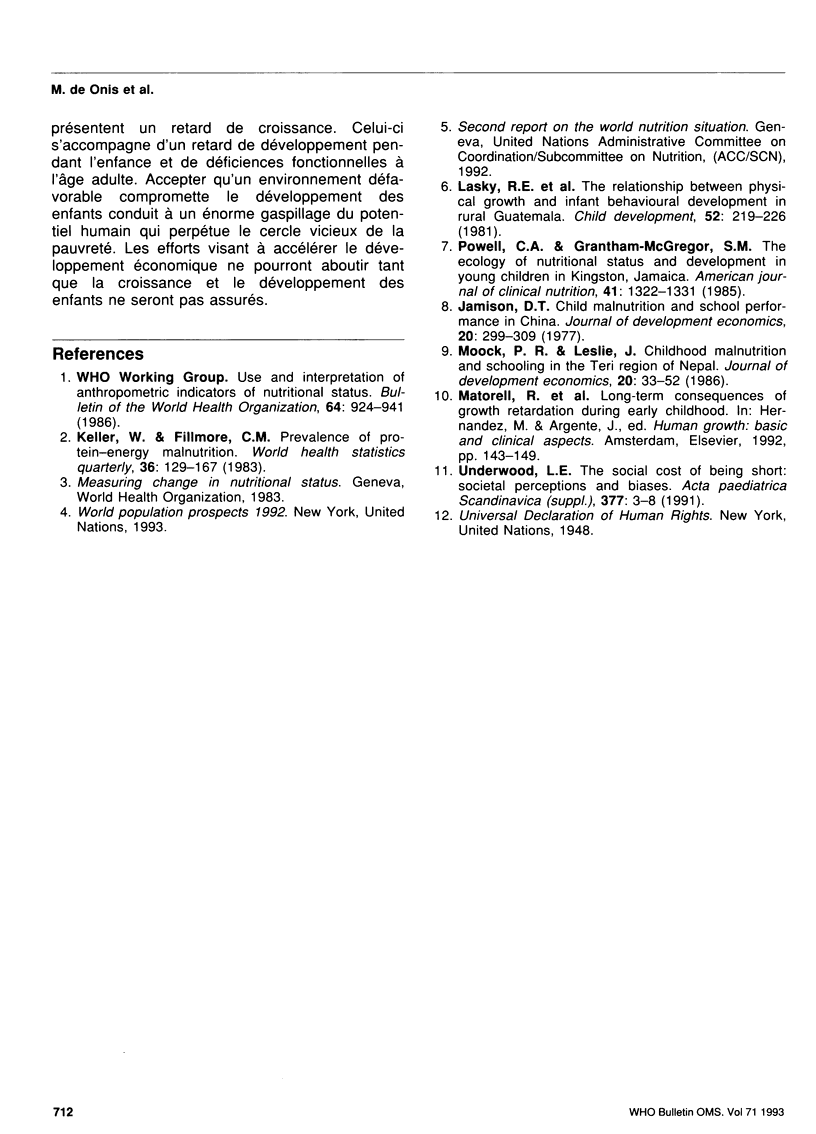
Selected References
These references are in PubMed. This may not be the complete list of references from this article.
- Keller W., Fillmore C. M. Prevalence of protein-energy malnutrition. World Health Stat Q. 1983;36(2):129–167. [PubMed] [Google Scholar]
- Lasky R. E., Klein R. E., Yarbrough C., Engle P. L., Lechtig A., Martorell R. The relationship between physical growth and infant behavioral development in rural Guatemala. Child Dev. 1981 Mar;52(1):219–226. [PubMed] [Google Scholar]
- Powell C. A., Grantham-McGregor S. The ecology of nutritional status and development in young children in Kingston, Jamaica. Am J Clin Nutr. 1985 Jun;41(6):1322–1331. doi: 10.1093/ajcn/41.6.1322. [DOI] [PubMed] [Google Scholar]



